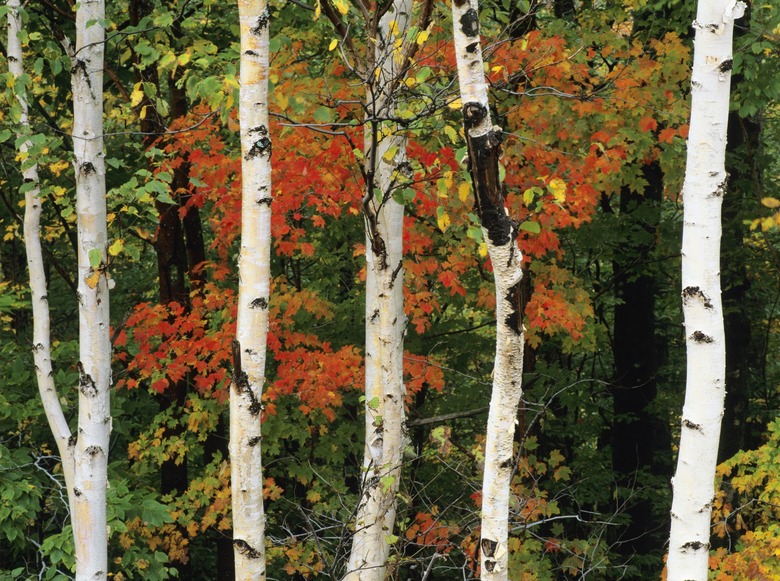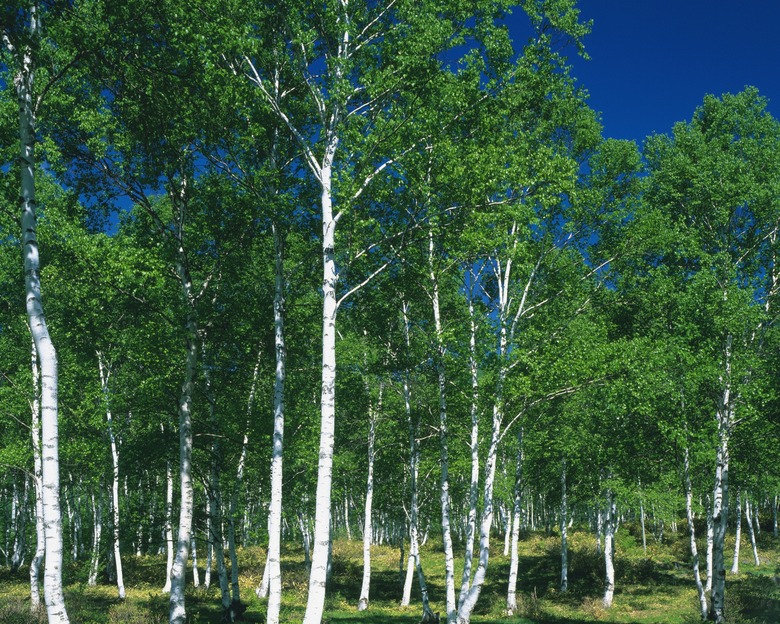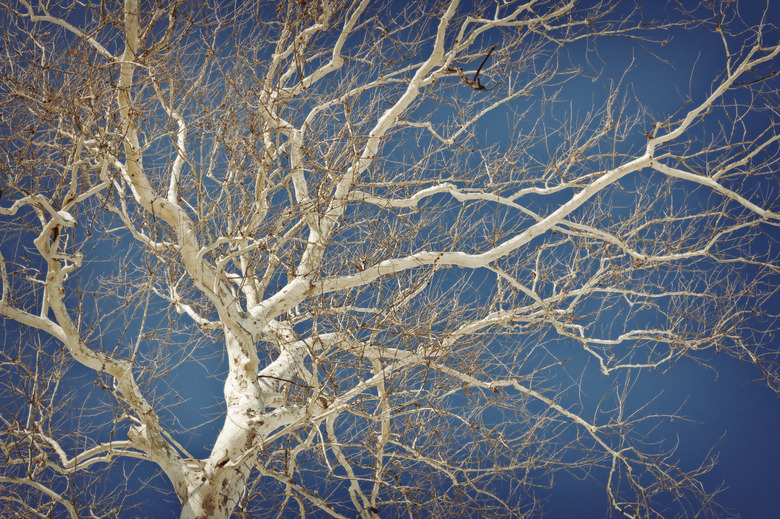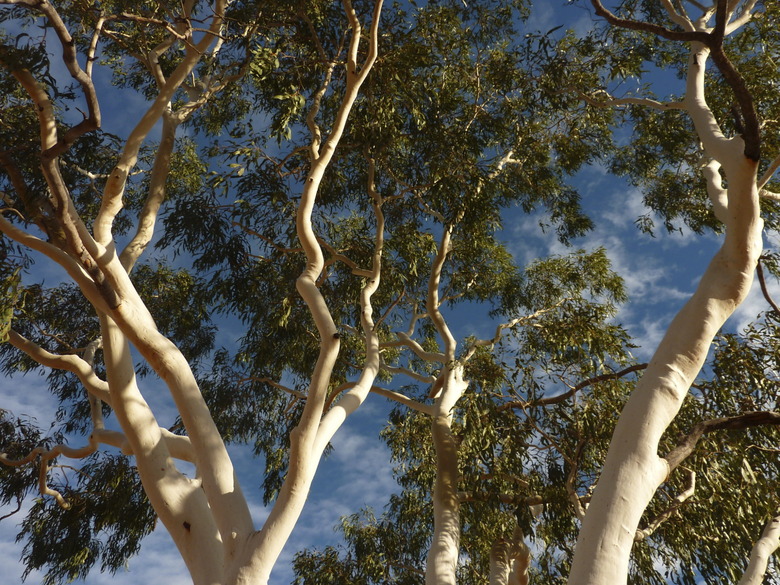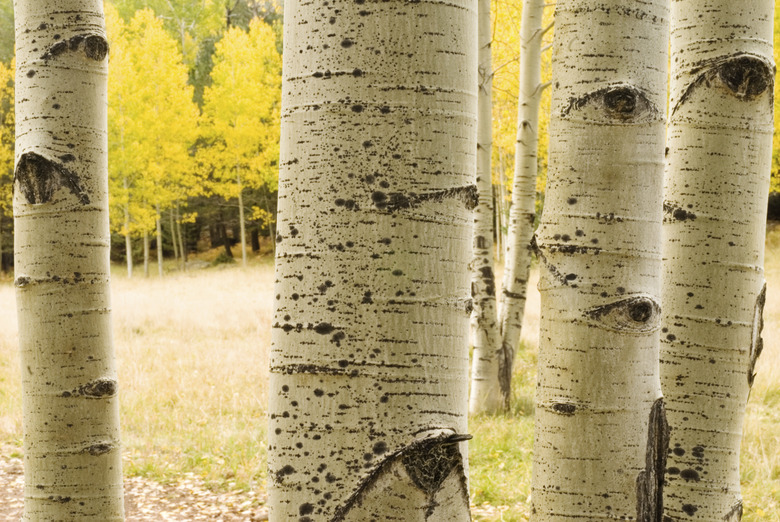What Trees Have White Bark?
About 1,000 species of trees are native to North America. Of those, only a handful have white bark. As a landscaping option, trees with white bark are prized for their appearance as well as their rarity. Not all of these species are suitable for the average yard, however. Fortunately, because there are so few, it's simple to identify these trees and determine whether or not any are right for your landscape.
White Birch
White birch (Betula papyrifera) is a deciduous North American tree with a planting range of U.S. Department of Agriculture plant hardiness zones 2 through 6. It is noted for its white bark that peels off in thin, paperlike strips. One of the tree's common names is paper birch. Because eastern American Indians built watertight canoes from overlapping strips of the bark, the tree is also commonly called canoe birch.
Reaching an average height of 70 feet, white birch is a medium-size tree that forms a rounded crown and often splits into multiple trunks. It requires moist but well-drained sandy or rocky soil, preferably with a northern or eastern exposure that affords partial shade. In the landscape, white birch displays well with evergreens and provides color contrast in fall when its leaves turn pale yellow.
American Sycamore
As one of the largest trees native to eastern North America, American sycamore (Platanus occidentalis) offers plenty of shade with its average maximum height of 90 feet and canopy spread of 70 feet. Its flaking bark creates a gray and white camouflage effect.
Also known as buttonball tree and American planetree, the American sycamore has a wide planting range that spans USDA zones 4b through 9a. The tree requires full sun but isn't particular about soil type or pH level and tolerates extended flooding as well as drought. Because it is resistant to disease and air pollution, it is often selected for urban sites, including along residential streets.
Eucalyptus Ghost Gum
The eucalyptus ghost gum (Corymbia papuana, formerly Eucalyptus papuana) is an Australian native evergreen that is hardy in USDA zones 9 through 11. It tolerates any type of soil and is drought-resistant. Because it produces very little "litter" and its branches withstand high winds, the tree is planted along desert highways.
With a potential height of 60 feet and a slightly smaller spread, the ghost gum tree offers shade for the home landscape, especially when planted in groves. Its white bark provides contrast against other evergreens and is a notable addition to moonlight gardens.
Quaking Aspen
Also known as golden aspen, mountain aspen and poplar, quaking aspen (Populus tremuloides) has the largest native range of North American trees, from USDA zone 1 through 8. It is so-named because its leaves appear to tremble with the slightest breeze due to flat petioles that join leaf blades and stems.
Although its white bark is considered attractive, quaking aspen is not ideal for the home landscape for multiple reasons. For example, it has an average lifespan of 20 years or fewer. Also, the tree sends out "runners" to reproduce, which is problematic in lawns. Another reason is that deer frequently rub their antlers on a quaking aspen in winter, causing wounds that expose the tree to insects and diseases.
References
- Missouri Botanical Garden: Betula Papyrifera
- Virginia Tech: Paper Birch
- North Dakota State University: Quaking Aspen
- Silvics of North America, Volume Two; U.S. Department of Agriculture, Forest Service
- U.S. Department of Agriculture: Plant Guide — American Sycamore
- U.S. Department of Agriculture, Forest Service: Platanus Occidentalis, Sycamore
- Virginia Tech: American Sycamore
